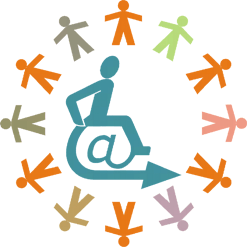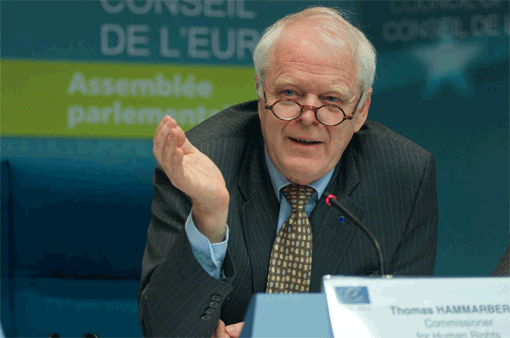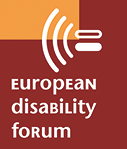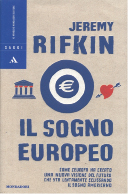In his bestseller "The
European Dream" (Mondadori 2004), Jeremy Rifkin describes the
characteristics of the European Dream, a vision of the world bearing an
alternative model eclipsing the American Dream. For more than two
centuries the world has looked to the American Dream for inspiration and
guidance. Now, a newly emerging European Dream is beginning to offer an
alternative to the American vision. The European Dream represents a new
chapter in world history. It is the first attempt at creating a global
consciousness, befitting a globalizing economy. Rifkin explores the
economic, political and cultural aspects of both worldviews, the American
Dream promoting autonomy at all costs, the overconsumption, the
satisfaction of all appetites, the waste of the earth's goods, the
economic growth without obligations, the predominance of the powerful and
the penalization of the weak, the excessive defense of one's own
interests.

Americans consider themselves the chosen people, therefore deserving a
privileged part of the earth's wealth, an extreme selfishness that has
imposed the culture of consumption where the individual is a consumer
instead of a citizen, an avid and insatiable consumer. The European Dream,
instead, is one in which individuals find security not through individual
accumulation of wealth, individual independence, assimilation, unlimited
material growth, debilitating fatigue, right to property, unilateral
exercise of power but instead through connectivity, sustainable
development, cultural diversity, quality of life, global cooperation, and
respect for human rights and those of nature. The European Community has
now exceeded the United States of America in the economic field, by
becoming the most
|
 |
important economy of the
world. It is important to say that already back in 2004, Rifkin did not
underestimate the difficulties and weaknesses of the European society, but
he certainly did not imagine that only seven years after the publication
of his book these would have dramatically become more acute to the point
where we could ask if his thinking still corresponds to the reality. As a
matter of fact, for the past few years now, even before the two
devastating financial crises of the European Community, there have been in
some States social and cultural phenomena that are contradictory to the
optimistic vision of Rifkin. We are observing a general conservative
tendency and a fogging of the ideals that inspired the founders of the
united Europe.
The Commission er for Human Rights at the Council
of Europe, Thomas Hammarberg, has on many occasions reported that in a
difficult economic situation, when tough decisions need to be taken on
priorities, the social context is in danger of crumbling under the
pressure of conflicting interests and the principle of equality of human
rights comes in second with respect to emergencies deemed most urgent. er for Human Rights at the Council
of Europe, Thomas Hammarberg, has on many occasions reported that in a
difficult economic situation, when tough decisions need to be taken on
priorities, the social context is in danger of crumbling under the
pressure of conflicting interests and the principle of equality of human
rights comes in second with respect to emergencies deemed most urgent.
|
Over the past ten years, Europe has
made important strides toward recognizing the universality of human
rights, but the phenomenon of discrimination against the weaker and
protected members of society is still relevant. The manifestations of
racism against several ethnic groups are common, as well as against
migrants and asylum seekers; the forms of discrimination against religions
not in favour in the public opinion are reaching levels of concern; people
with diverse sexual orientations are often deprived of basic civil rights
under the pretext of their diversity; women, although they form the
majority with regards to men, suffer discrimination, degrading treatment,
abuse and violence; persons with disabilities, finally, eight years after
the celebration of the European Year dedicated to them do not see yet
recognized their right to equal opportunities and their full inclusion in
society.
 |


 er for Human Rights at the Council
of Europe, Thomas Hammarberg, has on many occasions reported that in a
difficult economic situation, when tough decisions need to be taken on
priorities, the social context is in danger of crumbling under the
pressure of conflicting interests and the principle of equality of human
rights comes in second with respect to emergencies deemed most urgent.
er for Human Rights at the Council
of Europe, Thomas Hammarberg, has on many occasions reported that in a
difficult economic situation, when tough decisions need to be taken on
priorities, the social context is in danger of crumbling under the
pressure of conflicting interests and the principle of equality of human
rights comes in second with respect to emergencies deemed most urgent.
